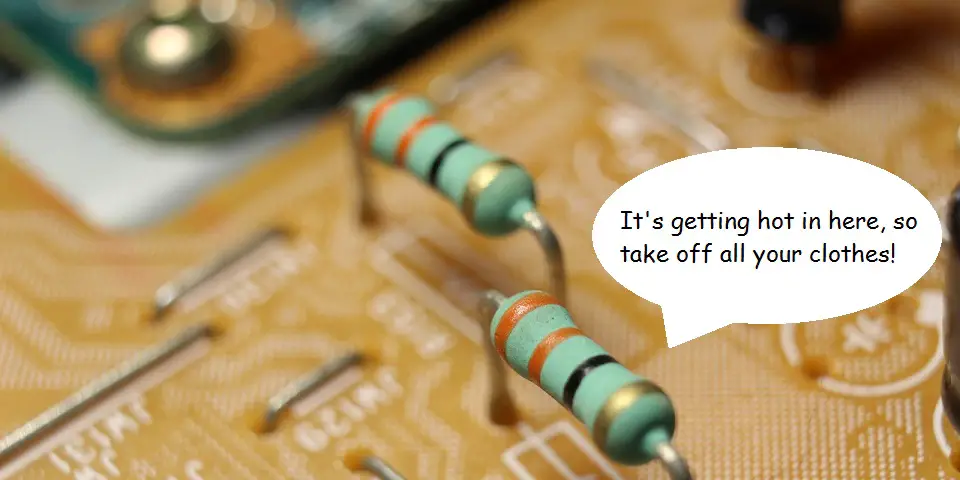Resistors are crucial components that are found in almost every (if not all) circuits inside electrical and electronic devices and machines.
They have many uses within these circuits, but the main one being to limit the flow of current.
Sometimes resistors can heat up.
Why do resistors get hot?
Resistors get hot because excess energy is dissipated in the form of heat when current flows through the resistors. Exceeding a resistor’s power rating causes more current to flow through the resistor. This increase in current sees an increase in electrons which start to bump and rub into each other causing friction resulting in energy released as heat. This is the main reason resistors get hot.
A closer look at current through a resistor
Let’s start with Current.
Without current, the electrical and electronic world would stop still. Current is the blood that flows through every circuit giving it life.
Current is defined as the flow of electrons (specifically past a given point) in a circuit.
The unit of measurement for current is known as Ampere or Amp (A) which tells us the exact number of electrons that are passing a given point.
The higher the current, the higher number of electrons and vice versa.
However, for electrons to flow freely, it requires a Conductor. Conductors are materials that have higher electrical conductivity which means that electrons can move through them more easily.
On the other hand are materials known as Insulators, which inhibit (prevent) the flow of electrons.
Copper is the go to conductor for making wires and components due to its high conductivity.If we were to slice up the conductor (such as copper) when electrons are flowing, we would see something similar to what is in the image below.
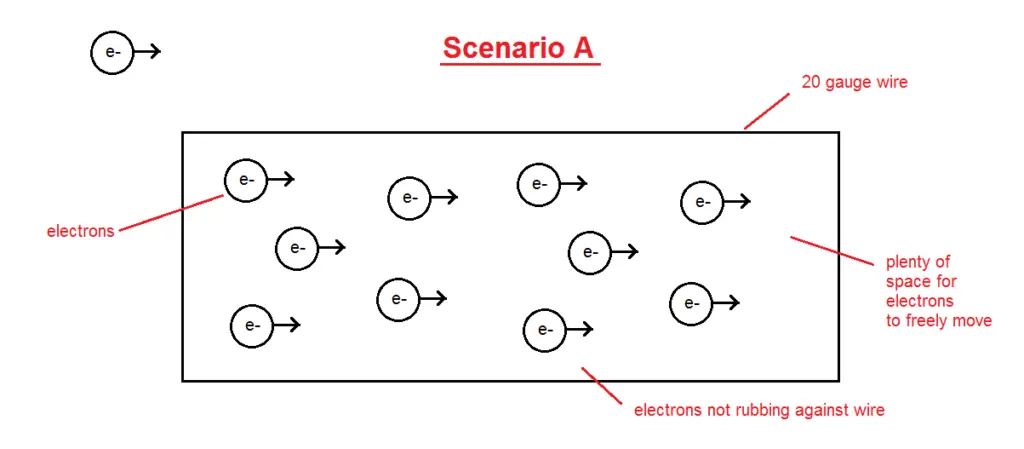
Note, for electrons to move in a uniform manner in a given direction, it requires an energy source such as a battery, otherwise electrons move about randomly.
Deeper look at a resistor
Let’s take a closer look at the Resistor.
There are many different types of components and devices in the electrical and electronic world, each with their own unique abilities which help perform a certain function within a circuit.
The Resistor is a fundamental electronic component that can be found in almost all circuits.
So what is the definition of a resistor?
A resistor is a passive electrical and electronic component, whose main purpose is to ‘resist’ the flow of current in a circuit. Also, rather than having an ambiguous resistance value, resistors are created with a set resistance value.
The bigger the resistance, the less current can flow, and the lower the resistance, the more current can flow.
It is known as a passive component due to the fact that it has no means of generating its own power, but rather dissipates power in the form of heat.
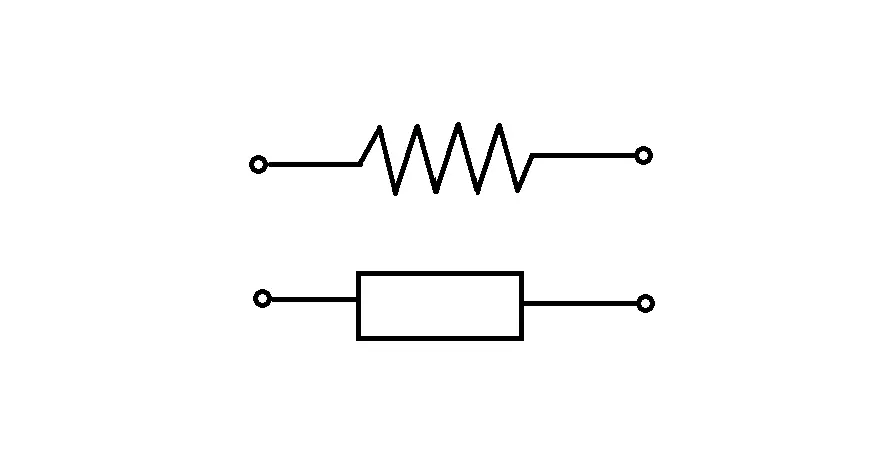
Construction of a resistor and how it provides resistance
So, we know that conductors allow current to flow more freely compared to an insulator.
Under the umbrella of resistors, there are many different variations of how they are constructed and the materials used.
But, to save you time, I shall concentrate on the most common type which is the Wire-wound.
Below is an image of what a wire-wound resistor looks like on the inside;
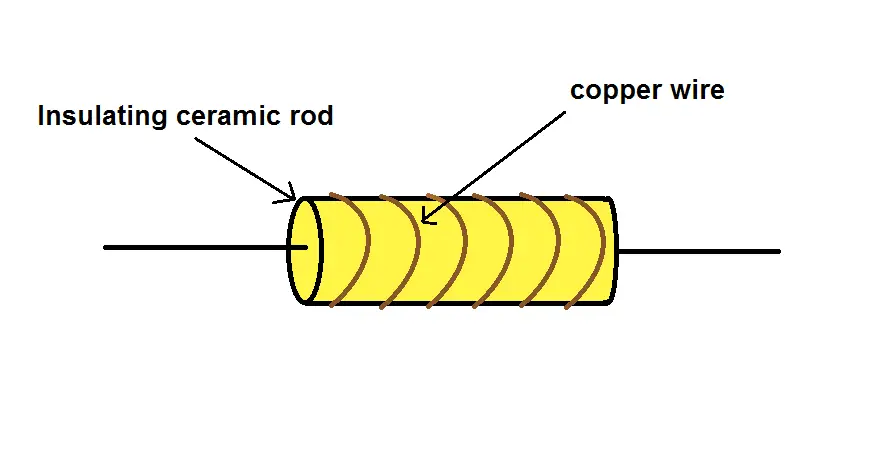
As you can see, there is a rod that is wrapped by a wire. The rod is typically an insulating ceramic, and the wire is copper (due to its great conductivity)
But, copper has low resistance! So, why use it in a component meant to resist the flow of current?
While resistors need to oppose the flow of current, they still need to let the current pass. But, just sticking a straight piece of copper wire inside a resistor is not going to add much resistance.
The key to increasing the resistance of a set length of copper wire comes down to coiling the wire. This is why the copper wire is wound (coiled) around the insulating material.
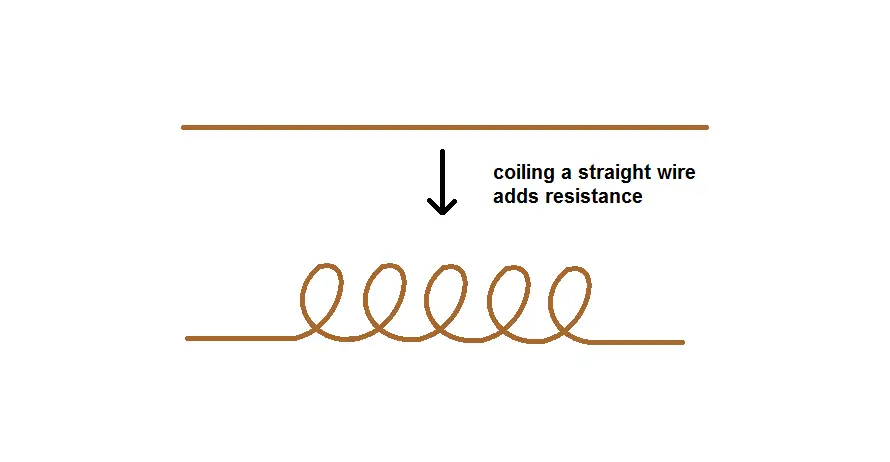
The resistance of a resistor can be accurately set by controlling the number of turns of the coil of copper wire.
Also, we saw the resistance of a material is controlled by a number of factors; length and cross-sectional area.
If the length of copper wire is set, we can further increase its resistance after coiling it by reducing its cross-sectional area (make it thinner). This is thanks to the inversely-proportional relationship between resistance and the cross-sectional area of a wire.
But, what if you want to reduce the resistance of a resistor?
Just do the opposite! Reduce the number of turns, and increase the cross-sectional area of the wire.
Resistor power ratings
One last thing to note before we dive into why resistors get hot, are power ratings.
Every electrical and electronic device, and component has a power rating. This is a value that indicates how much electrical power is needed by the component to work effectively.
Also, the power rating value indicates the maximum allowable electrical power the device or component can handle.
Exceeding this value will cause damage to the component.
The power rating can be broken further into; Voltage ratings, and Current ratings.
This is because power is a product of voltage and current ( P = V x I).
Components will have values for maximum voltage and maximum current ratings that should not be exceeded. These two values can be multiplied to get the maximum power rating.
The same holds true for resistor power ratings, which is a value that denotes the maximum power that a resistor can withstand.
Common resistor power ratings include;
- 0.25 Watt
- 0.5 Watt
- 1 Watt
- 2 Watt
- 25 Watt
The main reason resistors get hot
Ok, so we have learned a bit about current, resistors, and their power ratings. With this knowledge in hand we can take a look at the main reason why resistors get hot.
Earlier we saw how electrons flow through a conductor (which would be the same if we were to take a look at how electrons flow inside a resistor).
The main reason that resistors get hot is that when current passes through it energy is lost in the form of heat.
This happens due to friction as electrons bump into each other, as well as the conductor resulting in heat.
But, the resistor shouldn’t be very hot to the touch under normal conditions (if its power ratings are not exceeded).
The main purpose for power ratings is to tell us the maximum capacity of current (electrons) components like a resistor can handle for a fixed area.
The higher the current that the resistor is subject to, the higher the number of electrons that will start to flow.
However, the resistor’s physical area remains the same, but now has more electrons flowing through it, and with less space to do so. As you can imagine there is going to be more collisions between electrons resulting in more friction which leads to the resistor getting hotter.
The diagram below shows an increase in current (which results in an increase in electrons) for the same given area within a resistor.
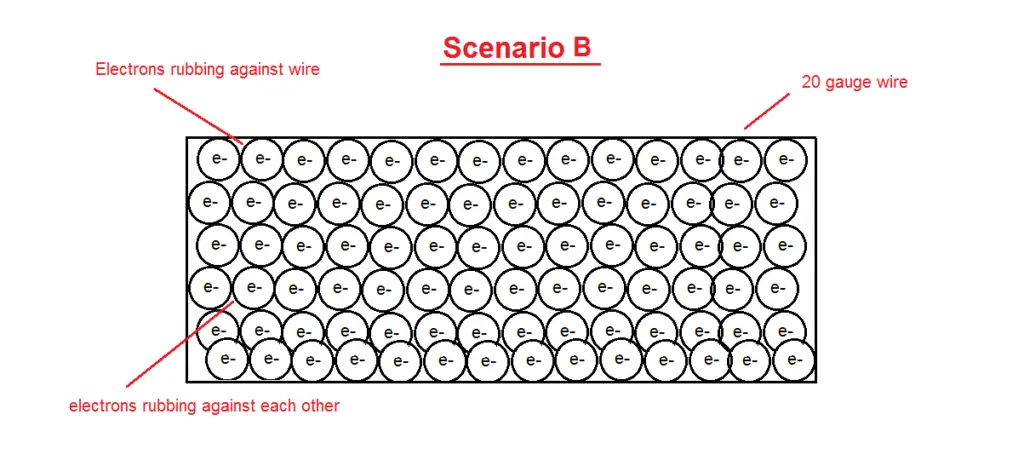
Also, there is a phenomenon known as Thermal Runaway, which describes a scenario where an increase in temperature dissipates energy (in the form of heat), further causing an increase in temperature.
What happens to the resistors when they get too hot?
In any electrical and electronic circuit, components and devices getting too hot is not wanted. The same is true for resistors.
There are a couple of things that can happen to a resistor if it gets too hot.
Resistance of resistors change if it gets to hot
The first thing that can happen if a resistor gets too hot is that its resistance can change.
When it comes to resistors, there is an important parameter which is known as the Temperature Coefficient of Resistance (or TCR).
TCR shows us the change in resistance for any given material (such as a conductor) per degree of temperature change.
Every material has its own TCR value.
The resistance increases as the temperature increases regardless of the material as well as the fixed length and area of the resistor (but, some resistors are more resistant to changes in temperature than others).
This happens because the atoms within a material get excited as the temperature increases. This causes the atoms to move about more hastily, making it harder for electrons to get past.
The TCR of a resistor is usually affected by ambient temperature. However, if a resistor is housed within an enclosed area, the heat given off by the resistor as it gets too hot can increase the ambient temperature, thereby increasing its resistance.
Resistor can get physically damaged if it gets too hot
The next major thing that can happen is that the resistor can get damaged.
A resistor is constructed using specific materials that give the resistor its abilities. However, these materials are capable of handling a certain range of temperatures.
Exceeding these temperatures will damage materials of the resistor on the inside as well as outside (the body)
Do all resistors dissipate the same amount of heat
The amount of heat that a resistor will dissipate depends on the physical size of the resistor, as well as the power rating (which is largely dependent on its size too).
A smaller resistor will get hotter faster due to its lower power rating. However, the temperature might be lower also due to its power rating and physical size.
Whereas a bigger resistor (with a higher power rating) can withstand much more power and not get hot till subject to higher currents compared to smaller resistor.
How to stop resistors from getting hot
We know that resistors get too hot if too much power is supplied to them (the power is higher than their maximum rating).
One of the easiest ways of stopping a resistor heating up is by limiting the amount of power it is subject to.
There are many equations for power, but below are some of the most common.
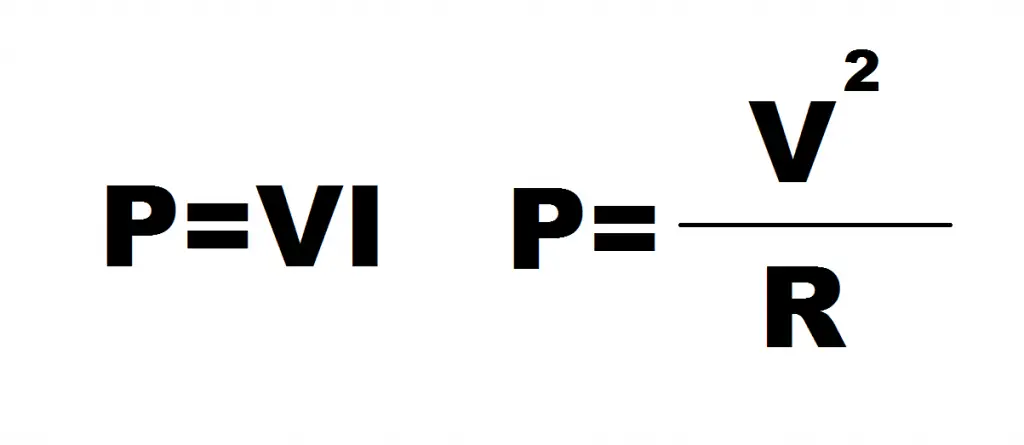
To limit the power to a resistor, you can either reduce the voltage or current.
Other ways to stop a resistor heating up are to use Heat Sinks or a Fan.

